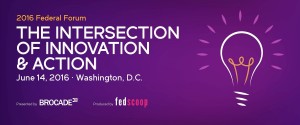 For this "Behind the Curtain" post we're taking a look at the seventh annual Amazon Web Services (AWS) Public Sector Summit. This complimentary event takes place June 20-21 in Washington, DC and brings together developers, IT, and line-of-business leaders to address current best practices and trends in cloud computing.[Tweet "Behind the Curtain: The 7th Annual AWS Public Sector Summit. #GovEventsBlog"]
For this "Behind the Curtain" post we're taking a look at the seventh annual Amazon Web Services (AWS) Public Sector Summit. This complimentary event takes place June 20-21 in Washington, DC and brings together developers, IT, and line-of-business leaders to address current best practices and trends in cloud computing.[Tweet "Behind the Curtain: The 7th Annual AWS Public Sector Summit. #GovEventsBlog"]
The AWS Public Sector Summit is one of the largest cloud-focused events specifically designed for public sector. AWS focuses this event on the customer voice with many opportunities for attendees to learn from their peers. 4000+ government IT and business leaders from around the world will share their successes, challenges, and lessons learned along the way in their journey to the cloud.[Tweet "AWS Public Sector Summit: cloud-focused event specifically for the public sector. #GovEventsBlog"]
While this event is focused on the public sector, AWS is able to pull from their large commercial base to include stories and best practices from the private sector that directly apply to government missions and challenges. This year's event will feature AWS CEO, Andy Jassy, as a keynote, marking the first time he has spoken to such a large public sector-focused audience. In addition to Jassy and other AWS speakers, the event features customers and partners sharing their insights and demos. Continue reading






